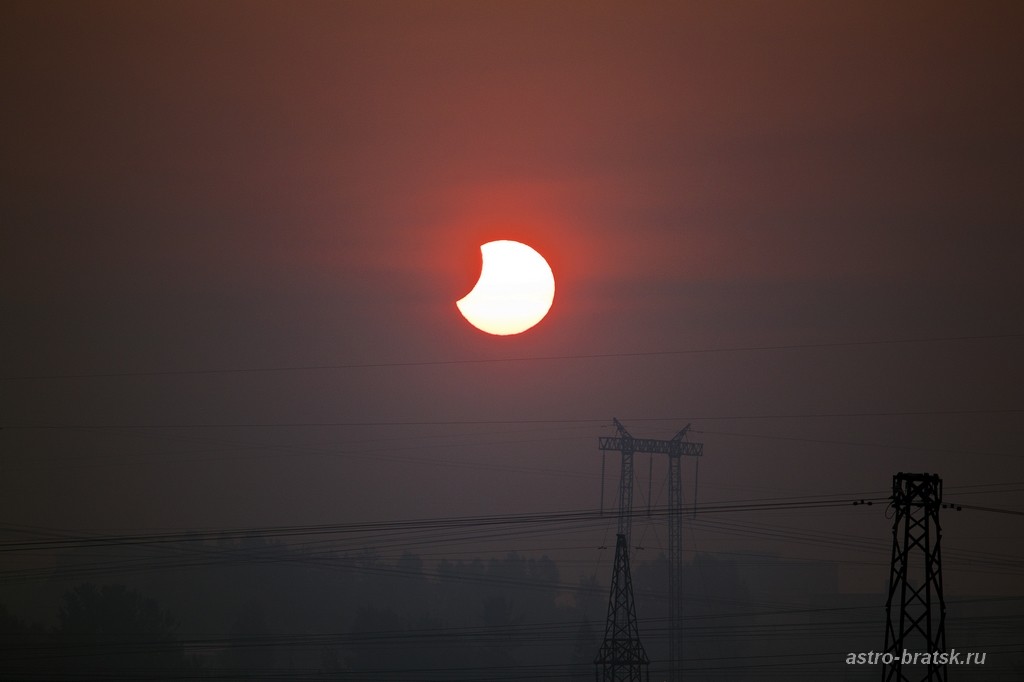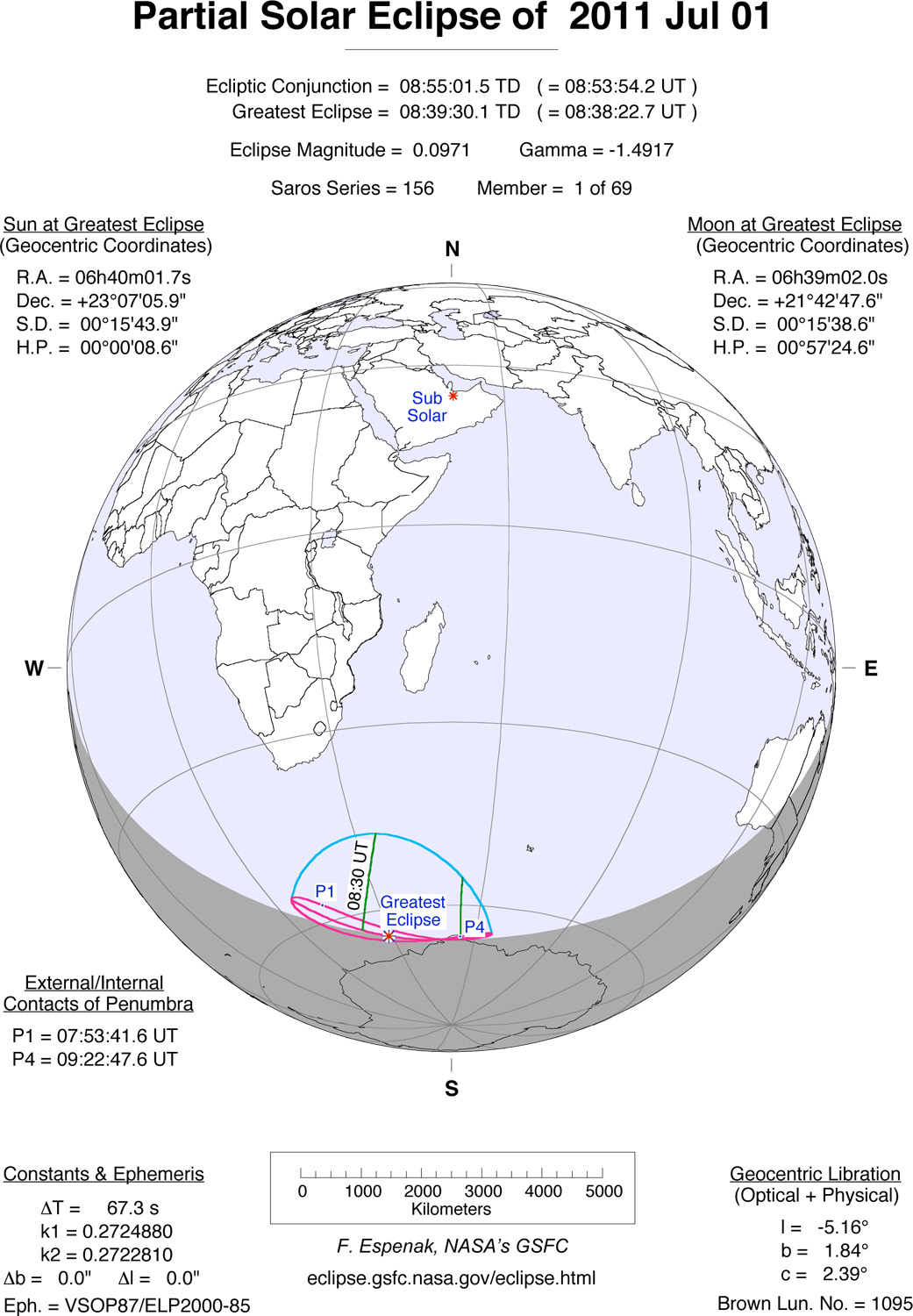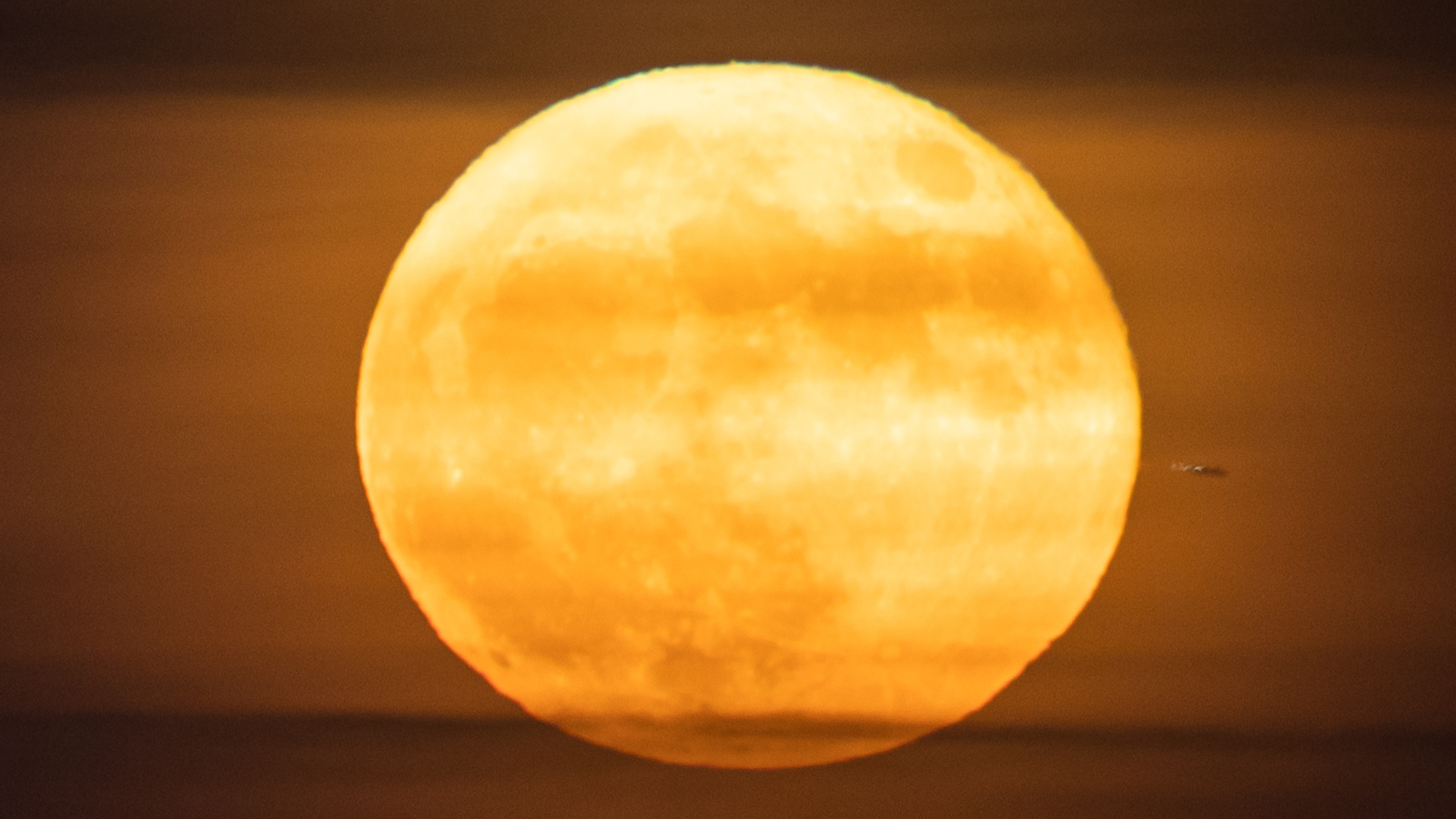
The moon will block part of the sun on Friday (July 1) in a partial solar eclipse, but everyone on the planet will likely miss the event unless you're a penguin, or possibly aboard an icebreaker sailing between Antarctica and Africa.
The partial solar eclipse will be relatively minor, as eclipses go, so it's no big deal for skywatchers to skip. However, this particular eclipse is noteworthy because it falls into two unusual categories.
First, it turns out that this event, puny as it is, will be the third eclipse to take place within a single month's time. It comes after a partial solar eclipse on June 1 over Earth's northern polar regions. That event was followed on June 15 by a stunning total lunar eclipse over Europe and Asia. [Blood Moon: Total Lunar Eclipse Photos of June 15]
Now on Friday, there will be yet another partial eclipse of the sun.
Rare eclipse trio
An eclipse can take place when a full or new moon reaches that point in its orbit where it intersects the plane of the Earth’s orbit, called a node.
When the moon comes to within a certain distance of this intersection point, we can see two types of eclipses; a solar eclipse at the new moon phase (when the moon blocks part or all of the sun), and a lunar eclipse at full moon phase (when the moon dips into Earth's shadow). [Infographic: How Moon Phases Work]
Get the Space.com Newsletter
Breaking space news, the latest updates on rocket launches, skywatching events and more!
But the lunar eclipse on June 15 saw the moon pass almost directly through the center of the Earth’s shadow and it ended up closely aligned with the node. That meant there was enough room for it to be flanked by two solar eclipses.
So the new moon of June 1 caused a partial solar eclipse and the very next new moon, which occurs Friday, will again partially eclipse the sun. Such an unusual circumstance as this won't happen again until 2029.

Saros solar eclipses
The other unusual facet about this upcoming solar eclipse is that it marks the beginning of a new saros series.
Every eclipse, solar or lunar, belongs to a series of similar ones, a period of approximately 6,585.3 days (18 years 11 days 8 hours). It was known to ancient astronomers as a period when lunar eclipses seem to repeat themselves, but the cycle is applicable to solar eclipses as well.
The eclipses in a saros cycle are similar but evolving. One saros after an eclipse, the sun, Earth and moon return to approximately the same relative geometry, and a nearly identical eclipse will occur. A series of eclipses that are separated by one saros is called a saros series.
A series will start with an eclipse occurring near the North or South Pole and successive eclipses will occur at 18.03-year intervals, working across the globe for 12 to 15 centuries until the final eclipse in this long series takes place on the opposite end of the globe.
Friday's eclipse marks the very first of a brand new series — number 156 — over the Antarctic, and hence the obscuration of the sun's disk will result in one of the slightest eclipses of all, administering a mere touch of shadow to the south polar regions of our Earth. The very last member of this particular saros series will be a partial eclipse passing over the northern polar regions in the year 3237.
Uninhabited region of visibility
If you really feel the need to see Friday's eclipse (or maybe you’re trying to find someplace unusual to take the wife and kids on summer vacation), here’s where you’ll have to go:
Just off Lutzlow-Holm Bay on the coast of Antarctica, near where the South Atlantic and Indian Oceans meet. This is the point of greatest eclipse, where, at 8:38 UT a mere 9.7 percent of the sun will be obscured by the passing new moon.
The shadow will be in contact with Earth for less than 90 minutes before it slides back out into space. More than likely, this will be remembered — if it's remembered at all — as the solar eclipse that nobody saw.
Joe Rao serves as an instructor and guest lecturer at New York's Hayden Planetarium. He writes about astronomy for The New York Times and other publications, and he is also an on-camera meteorologist for News 12 Westchester, N.Y.
Join our Space Forums to keep talking space on the latest missions, night sky and more! And if you have a news tip, correction or comment, let us know at: community@space.com.

Joe Rao is Space.com's skywatching columnist, as well as a veteran meteorologist and eclipse chaser who also serves as an instructor and guest lecturer at New York's Hayden Planetarium. He writes about astronomy for Natural History magazine, Sky & Telescope and other publications. Joe is an 8-time Emmy-nominated meteorologist who served the Putnam Valley region of New York for over 21 years. You can find him on Twitter and YouTube tracking lunar and solar eclipses, meteor showers and more. To find out Joe's latest project, visit him on Twitter.
